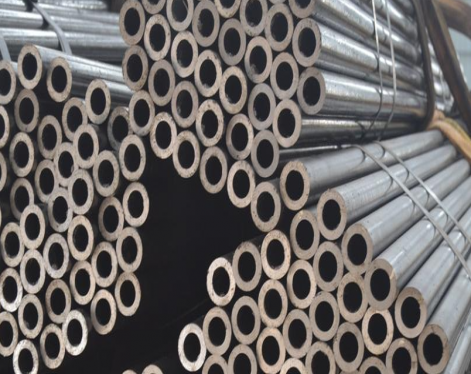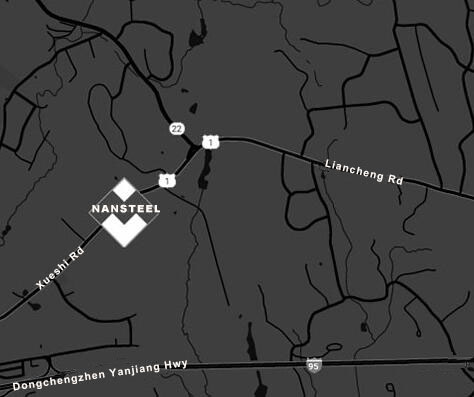When to Choose Seamless Pipe
In industrial and construction applications, selecting the right type of steel pipe is crucial for ensuring long-term reliability and efficiency. Among the available options, seamless pipes stand out for their superior strength, uniformity, and ability to perform under extreme conditions. But when exactly should you choose seamless pipes over welded alternatives? This article explores the ideal scenarios, advantages, and technical reasons behind choosing seamless steel pipes.
The choice of seamless pipe depends on the specific application requirements and operating conditions. Here are some common reasons why seamless pipe is chosen:
1. High-Temperature and High-Pressure Environments: Seamless pipe can withstand high temperatures and pressures, making it a common choice for environments that require the transport of high-temperature fluids or high pressures. For example, seamless pipe is often used in high-temperature and high-pressure piping systems in the oil and gas industry.
2. Corrosive Media: Seamless pipe offers excellent corrosion resistance, especially when exposed to corrosive media such as acids, alkalis, and salts. Therefore, it is a common choice in industries such as the chemical industry that require the transport of corrosive media.
3. High Precision Requirements: Due to the complex manufacturing process and strict control standards, seamless pipe generally offers higher precision and better surface quality. In applications requiring high precision and a smooth finish, such as high-precision instruments and machinery manufacturing, seamless pipe is often the preferred material.
4. Structural Strength Requirements: Seamless pipe is manufactured from a single piece of material with no internal welds, resulting in high strength and toughness. In applications requiring heavy loads or structural strength, seamless pipe is generally a more reliable choice. For example, seamless pipe is often used in buildings and bridge structures.
5. Pipe Connection Requirements: Seamless pipe can be connected through various methods, such as threading and welding. It is an ideal choice for applications requiring compact, leak-free pipe connections, such as oil and gas transportation and industrial pipelines.
In summary, the selection of seamless pipe also requires consideration of specific operating conditions, application requirements, and economic viability. A comprehensive uation and comparison based on actual needs, combined with consideration of relevant standards and specifications, should be conducted to select the most appropriate pipe material and type.
The choice of seamless pipe depends on the specific application requirements and operating conditions. Here are some common reasons why seamless pipe is chosen:
1. High-Temperature and High-Pressure Environments: Seamless pipe can withstand high temperatures and pressures, making it a common choice for environments that require the transport of high-temperature fluids or high pressures. For example, seamless pipe is often used in high-temperature and high-pressure piping systems in the oil and gas industry.
2. Corrosive Media: Seamless pipe offers excellent corrosion resistance, especially when exposed to corrosive media such as acids, alkalis, and salts. Therefore, it is a common choice in industries such as the chemical industry that require the transport of corrosive media.
3. High Precision Requirements: Due to the complex manufacturing process and strict control standards, seamless pipe generally offers higher precision and better surface quality. In applications requiring high precision and a smooth finish, such as high-precision instruments and machinery manufacturing, seamless pipe is often the preferred material.
4. Structural Strength Requirements: Seamless pipe is manufactured from a single piece of material with no internal welds, resulting in high strength and toughness. In applications requiring heavy loads or structural strength, seamless pipe is generally a more reliable choice. For example, seamless pipe is often used in buildings and bridge structures.
5. Pipe Connection Requirements: Seamless pipe can be connected through various methods, such as threading and welding. It is an ideal choice for applications requiring compact, leak-free pipe connections, such as oil and gas transportation and industrial pipelines.
In summary, the selection of seamless pipe also requires consideration of specific operating conditions, application requirements, and economic viability. A comprehensive uation and comparison based on actual needs, combined with consideration of relevant standards and specifications, should be conducted to select the most appropriate pipe material and type.
When Welded Pipes Are a Better Option
While seamless pipes are superior in performance, welded pipes may be a more economical and practical option in some cases:
Low-pressure water or gas transport
Large-diameter pipelines where seamless production is limited
Structural applications where high pressure is not a factor
Projects with strict budget constraints
In such situations, high-quality welded pipes (especially those meeting API 5L, ASTM A53, or EN 10217 standards) can perform effectively when properly inspected and tested.
Low-pressure water or gas transport
Large-diameter pipelines where seamless production is limited
Structural applications where high pressure is not a factor
Projects with strict budget constraints
In such situations, high-quality welded pipes (especially those meeting API 5L, ASTM A53, or EN 10217 standards) can perform effectively when properly inspected and tested.
Industry Standards for Seamless Pipes
Seamless pipes are produced according to international standards to ensure consistent quality and performance. Some of the most recognized standards include:
API 5L – For line pipe used in oil and gas transportation
ASTM A106 / A53 – For high-temperature and general-purpose carbon steel pipes
ASTM A333 – For low-temperature service applications
ASTM A312 – For stainless steel seamless pipes
EN 10216 – European standard for pressure applications
These standards specify mechanical properties, chemical composition, testing requirements, and dimensional tolerances, ensuring that seamless pipes meet the highest performance demands.
API 5L – For line pipe used in oil and gas transportation
ASTM A106 / A53 – For high-temperature and general-purpose carbon steel pipes
ASTM A333 – For low-temperature service applications
ASTM A312 – For stainless steel seamless pipes
EN 10216 – European standard for pressure applications
These standards specify mechanical properties, chemical composition, testing requirements, and dimensional tolerances, ensuring that seamless pipes meet the highest performance demands.









